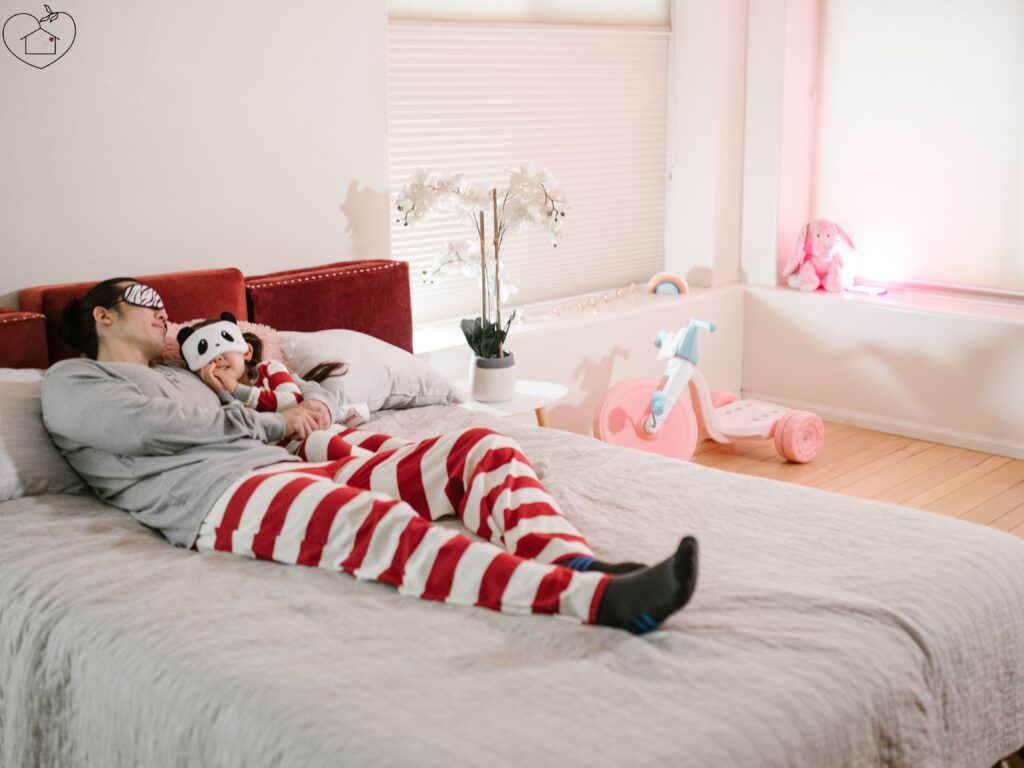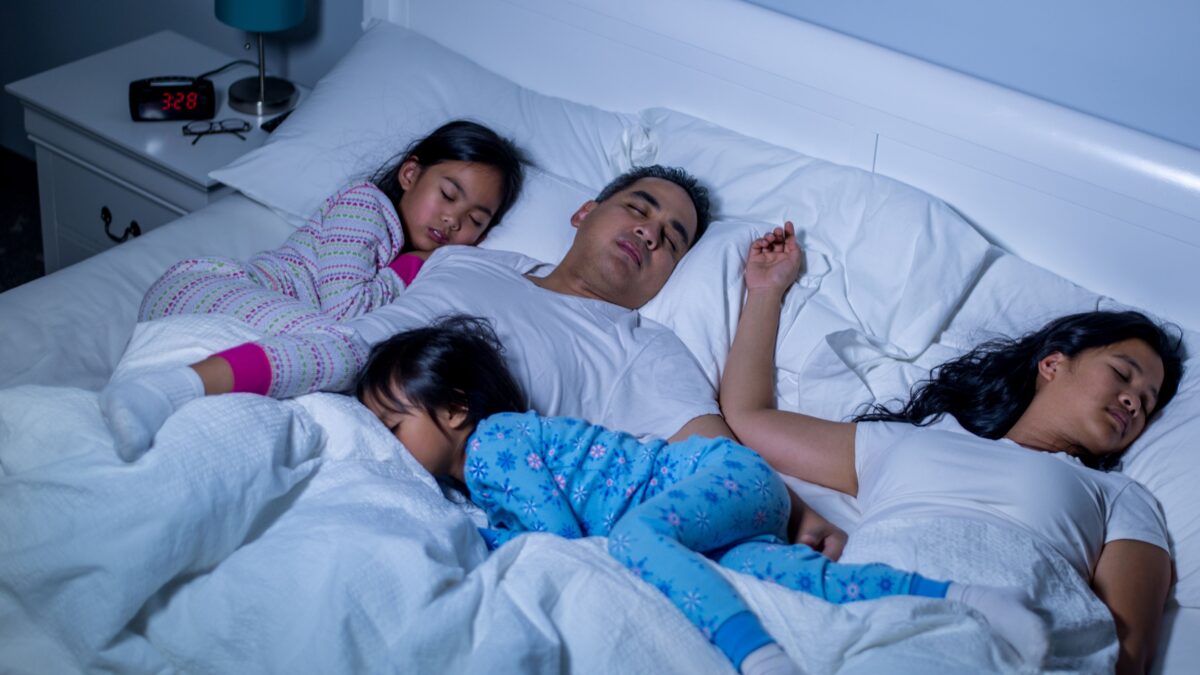The topic of children sleeping with their parents has long been debated by psychologists, parents, and sleep experts. While co-sleeping can provide comfort and bonding, it also has potential psychological implications for a child’s independence and development. This article examines the psychological effects of children sleeping with parents, when children should start sleeping alone, the effects of co-sleeping, and practical advice for transitioning to independent sleeping.
Table of Contents
ToggleWhat Age Is Fit for Sleeping Alone?
Children’s readiness to sleep alone varies, but experts suggest that most children can transition to their own bed between 6 months and 3 years.
1. Infancy (0-6 Months)
Co-sleeping is often practiced to guarantee the child’s safety and for ease of breastfeeding.
The American Academy of Pediatrics recommends room-sharing (but not bed-sharing) during this stage to reduce the risk of Sudden Infant Death Syndrome (SIDS).
2. Toddlerhood (1-3 Years)
Toddlers begin to develop autonomy and can benefit from having their own sleeping space.
3. Preschool Age (3-5 Years)
By this age, most children can sleep independently with proper encouragement and routines.
Prolonged co-sleeping beyond this age may hinder their ability to self-soothe and develop independence.
Psychological Effects of Child Sleeping with Parents
1. Delayed Independence
Co-sleeping beyond the toddler years may impede a child’s ability to develop autonomy.
Example: A child who relies on parental presence to fall asleep may struggle with separation anxiety when away from home.
2. Impact on Emotional Regulation
While co-sleeping provides comfort, it can limit opportunities for children to learn self-soothing techniques.
Example: A preschooler accustomed to sleeping with parents may have difficulty calming themselves during nighttime awakenings.
3. Disrupted Sleep Patterns
Sharing a bed with parents can result in interrupted sleep for both the child and parents.
Example: A restless child may disturb their parent’s sleep, leading to fatigue and stress for the entire family.
4. Dependence on External Comfort
Children may develop a reliance on parental presence to feel secure, hindering their ability to sleep independently.
Example: A child may struggle to sleep at a friend’s house or during trips if accustomed to co-sleeping.
5. Parental Boundaries and Relationship Impact
Co-sleeping can blur boundaries between parental roles and affect the couple’s relationship.
Example: Parents may experience reduced intimacy and personal space, leading to potential relationship strain.
6. Potential Benefits
When practiced intentionally, co-sleeping can promote bonding and provide emotional reassurance.
Example: A toddler recovering from illness may feel comforted by parental presence, aiding their recovery.

How Psychological Experts View Co-Sleeping
Psychologists emphasize that while co-sleeping can be beneficial in certain situations, prolonged co-sleeping beyond the early years may affect a child’s ability to build independence. Key insights include:
Attachment Theory:
Secure attachment is enabled through responsiveness, not necessarily co-sleeping. Encouraging independence helps children feel capable and secure.
Self-Regulation Development:
Independent sleeping teaches children to manage fears and discomfort, promoting emotional growth.
Cultural Perspectives:
Co-sleeping is more common and culturally accepted in some societies, with no negative effects when practiced intentionally.
Advice for Transitioning to Independent Sleeping
1. Create a Consistent Bedtime Routine
Establish calming activities before bed, like reading or gentle music.
Example: Read a favorite bedtime story, then tuck your child in with their favorite stuffed animal.
2. Make Their Bed Inviting
Decorate the child’s sleeping space to make it appealing and comfortable.
Example: Use colorful bedding, soft pillows, or a nightlight featuring their favorite characters.
3. Offer Gradual Transitions
Slowly move from co-sleeping to independent sleeping by using steps like a mattress in your room.
Example: Let your child start by sleeping in their bed but in your room before transitioning to their own room.
4. Use Positive Reinforcement
Praise and reward your child for sleeping independently.
Example: Offer stickers or small rewards for every night they sleep in their bed.
5. Address Nighttime Fears
Reassure your child about safety and provide tools to handle fears.
Example: Use a “magic” spray (a water bottle labeled as a monster spray) to ease fears of the dark.
6. Stay Calm During Setbacks
Transitions may be challenging; remain patient and supportive.
Example: If your child has trouble sleeping alone one night, reassure them and try again the next night.
The psychological effects of a child sleeping with parents depend on age, duration, and family dynamics. While co-sleeping offers bonding opportunities, fostering independence through gradual transitions to solo sleeping is essential for a child’s growth and emotional well-being. With patience, consistency, and the right tools, parents can create a comfortable and secure sleeping environment for their children.
Watch and Read!
- “The Sleep Lady’s Good Night, Sleep Tight” by Kim West
- “Healthy Sleep Habits, Happy Child” by Dr. Marc Weissbluth
- “NurtureShock” by Po Bronson and Ashley Merryman
- “The Secret Life of Babies” (2005)
- “Babies” (2010)
- “Parenthood” (1989)
FAQs
Most experts recommend transitioning between ages 1-3, depending on the child’s readiness and family structure.
When prolonged beyond early years, co-sleeping may hinder independence, but with proper boundaries, it does not cause emotional harm.
Make their bed comfortable, involve them in decorating their room, and use bedtime routines to create positive associations.

